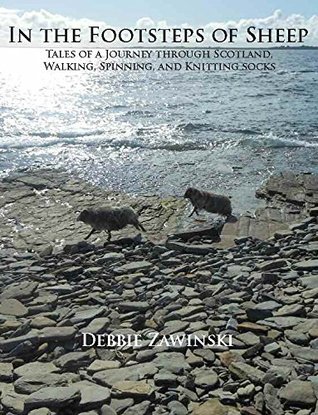Hentilagets
 |
||
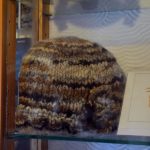 |
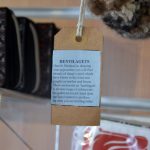 |
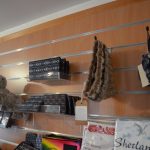 |
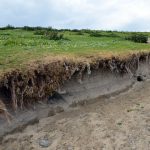 |
 |
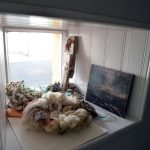 |
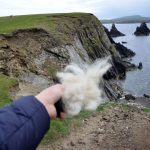 |
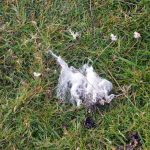 |
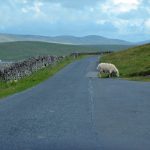 |
| Klik op afbeelding voor vergroting – Click to enlarge images | ||
Overal waar je kijkt in Shetland, zie je schapen. De lieflijke witte, grijze of bruin-zwarte bolletjes wol verzachten het ruige landschap dat zwart ziet van de turf. Tussen de wildroosters lopen de schapen vrij in de natuur of ze zitten op de weg omdat het asfalt nèt even warmer aanvoelt dan het grasland op de turflagen. Ook bij Sumburgh Head Lighthouse liepen ze lekker vrij rond. Eén of twee keer per jaar worden ze bij elkaar gedreven, geschoren, ontwormd en nagekeken. Daarna gaan ze weer opgelucht en vrolijk de heuvels op om hun vacht weer te laten aangroeien. Als het niet lukt ze te vangen, scheurt de vacht langzaam af, wat vast niet fijn voor ze zal zijn en ze een armoedig en aandoenlijk uiterlijk geeft.
Tijdens het grazen verliezen ze vaak kleine plukjes wol, die op de grond terecht komen of aan struiken en dergelijke blijven steken. Deze worden ‘hentilagets’ genoemd, ‘henti’ verwijzend naar hand, want die plukjes kan je met de hand verzamelen en daarna verwerken tot garen en breiwerk. In het Tangwick museum op de weg naar Eshaness verkopen ze breiwerk gemaakt van hantilagets. Debbie Zawinski schreef er zelfs een heel boek over dat in 2015 is uitgekomen. Ze trok door Schotland en verwerkte de plukjes wol van bijzondere schapenrassen die ze onderweg langs de wegen en velden vond tot sokken. De patronen vind je ook in ‘In the Footstep of Sheep‘, maar het leukst vond ik het om haar verhalen over de bekende plekjes in Shetland te lezen.
Everywhere you look in Shetland, you see sheep. The lovely white, gray or brown-black balls of wool soften the rugged landscape that looks black from the peat. Between the cattle grids the sheep run freely in nature or they lay on the road because the asphalt just feels a bit warmer than the grassland on the peat layers. On the meadows of Sumburgh Head Lighthouse they also had the freedom to walk anywhere they like. Once or twice a year they are driven together, shaved, get medication to remove worms and their health is checked. After that they are release en relieved and happy they’re going back into the hills to let their wool grow again. If they are not caught, the coat tear off bit by bit, what is probably not feeling very nice for them and gives them a shabby and pathetic appearance.
While grazing they often lose small tufts of wool, which end up on the ground or on bushes. These are called ‘hentilagets’, ‘ henti “referring to hand, because the tufts can be collected by hand and then processed into yarn and knitting. In the Tangwick museum on the road to Eshaness you can buy knitwear knitted with collected hantilagets. Debbie Zawinski even wrote a whole book about it, that was published in 2015. She walked through Scotland and processed the tufts of special breeds of sheep she found on the road and meadows into socks. The patterns you can find also in “In the Footstep of Sheep,” but I liked it the most to read her stories about the familiair places in Shetland.
